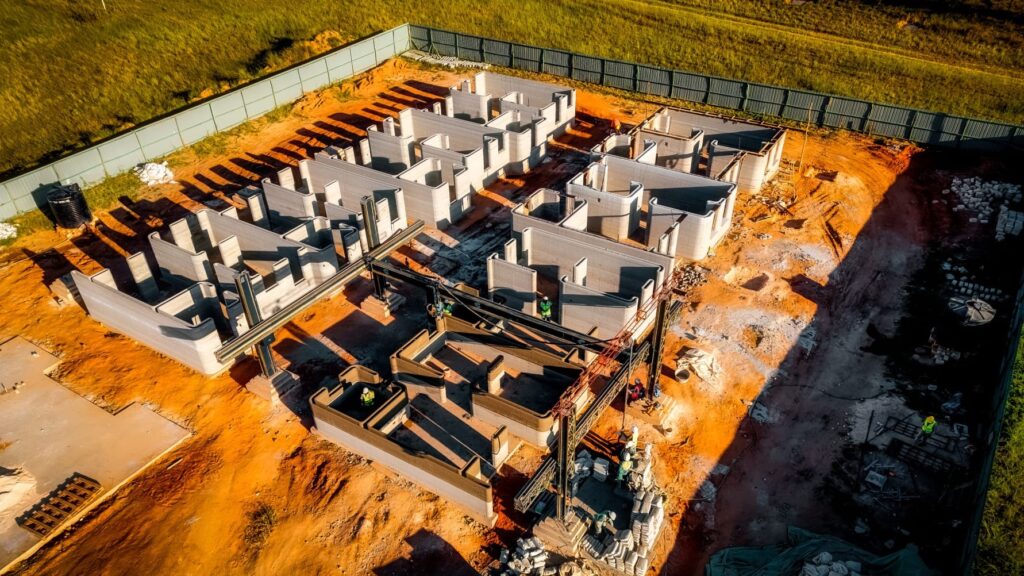COBOD, the Danish additive construction (AC) firm, has announced that the company’s printers are being used in Kenya to create the world’s largest community of printed affordable housing — topping a previous community built with the company’s printers, also in Kenya, which once held that same title. The company printing the houses is 14Trees, a joint venture between cement giant Holcim and British International Investment (BII), which focuses on accelerating the construction of affordable housing in Africa with 3D printing.
As with 14Trees, Holcim has a stake in COBOD, which has sold more construction printers than the rest of the market combined. The shared relationship of Holcim as a stakeholder makes 14Trees and COBOD fitting partners: 14Trees has also used COBOD’s BOD2 printer in Malawi, for instance, to build the world’s first concrete printed school, as well as to build the aforementioned, previous “world’s largest 3D printed community” in Kenya. Even more impressive than the size, however, is the fact that 14Trees has been printing homes in Kenya for the past 10 weeks at the rate of a home per week.
In a press release announcing the newest 14Trees community in Kenya, Francois Perrot, managing director of 14Trees, said, “With 3D printing, you can solve two problems at once. You can build faster like we have shown here with our 10 houses in 10 weeks. At the same time, we can achieve better cost efficiency, which will help make affordable housing a reality for the majority.” Philip Lund-Nielsen, head of COBOD Americas, boasted, “Considering how difficult the conditions are in Africa, it is impressive, that 14Trees has printed more houses on a single site, than any other construction 3D printing company in the US or elsewhere. In addition, they have done it faster, using just a single COBOD 3D printer not by using 5 printers or more.”

To accurately gauge how fast a home per week is, some context is helpful. As COBOD also somewhat punchily notes in the press release — without referring to the company specifically by name — the 100-home Texas community being built by ICON, starting in November, 2022, currently comprises nine homes that have been built in 3 months, or a little more than 13 weeks.
Obviously, both COBOD’s and ICON’s numbers are impressive, and it is a testimony to AC’s surprisingly accelerated growth of late, that ICON’s home per week and a half isn’t the fastest pace for 3D printed homes in the world right now. (Of course, it’s also possible that the Indian military is in fact printing homes more quickly than both companies.)
In any case, simply from the words of the leading companies involved, alone, it is obvious that there is now serious competition and momentum going on in the AC market segment. If this pace is sustained, demand for AC hardware could scale up fast enough to put a serious dent in the cost per printer, sooner rather than later. Perhaps more so than in any other area of the 3D printing industry, cost of equipment is a singularly consequential barrier to growth for concrete printing.
Subscribe to Our Email Newsletter
Stay up-to-date on all the latest news from the 3D printing industry and receive information and offers from third party vendors.
You May Also Like
3D Printing Webinar and Event Roundup: April 14, 2024
We’re starting off the week’s 3D printing webinars and events at ASTM AMCOE’s 11th Snapshot Workshop and MACH Exhibition. Stratasys continues its advanced training courses, SME is holding a virtual...
Westinghouse Achieves Serial 3D Printing of Nuclear Power Part
According to the “Additive Manufacturing in the Energy Sector: Market Analysis & Forecast” report from Additive Manufacturing Research (AMR), the energy sector saw $2.6 billion worth of 3D printing activity...
New EOS M 290 1kW Enables Copper 3D Printing for New Space, Automotive, and More
EOS has released a new EOS M 290 1kW metal powder bed fusion (PBF) system, designed specifically with copper in mind. Initially developed by its custom machine building subsidiary, AMCM,...
What’s Next for Additive Manufacturing Materials?
As many additive manufacturing (AM) users and engineers know, material science is just as important as the industrial 3D printing technology itself. Both work in tandem to help manufacturers reach...































